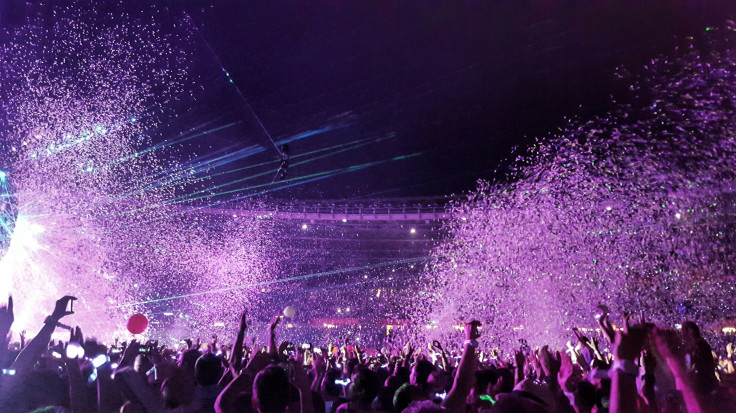Coldplay UK Tour Secrets: Wembley Spectacle, Why Hull Was Chosen, and Support Act Line-Up
Chris Martin thanked fans with an emotional speech at Wembley's opening night

The residency at Wembley Stadium is the longest consecutive run by any artist in the venue's history.
Each night has been a stadium-scale spectacle, with fireworks, lasers, confetti showers and fans lighting up the stands with LED wristbands that changed colour in sync with the music.
Audience members were also given 3D glasses to enhance the visuals, while dancers in alien costumes added to the theatrical atmosphere.
According to The Standard, the blend of fireworks and lasers created one of the most striking stadium shows London has ever seen.
Coldplay also made history by powering the Wembley concerts with renewable energy. Kinetic dance floors and energy-generating bikes allowed fans to contribute to the power supply, while compostable and reusable wristbands cut down on waste.
The production team reported a 59% reduction in carbon emissions compared with the band's 2016 tour.
Frontman Chris Martin struck an emotional note on opening night, thanking fans with the message: 'Thanks for letting us come home at last.' As LBC reported, this marked the start of an unprecedented 10-show run at Wembley.
Why Hull Was Chosen: An Unlikely Tour Stop
Coldplay's decision to launch the UK leg in Hull surprised many fans, with 'why are Coldplay playing Hull?' trending online.
The two sold-out shows at Craven Park were their first in the city, often overlooked in favour of Manchester, Birmingham or Glasgow.
As reported by The Guardian, the Hull concerts featured the same dazzling fireworks, lasers, alien costumes and 3D glasses, but carried a different energy, described as a 'working-class home crowd' atmosphere that contrasted with London.
The choice highlighted the band's aim to bring their music to audiences beyond the usual big-city circuit.
Support Act Line-Up: Rising Stars And Global Names
Another talking point has been the varied line-up of support acts. In Hull, Coldplay showcased rising British talent, giving a platform to emerging artists and creating a more intimate vibe.
At Wembley, the roster expanded to include internationally recognised names, blending newcomers with established stars.
The constantly changing support acts have become a hot search topic online, with fans eager to know who will open each night.
Coldplay are known for rotating their supporting artists to spotlight new talent, and this tour has continued that tradition.
Coldplay's Sustainable Touring Legacy
Beyond the spectacle, Coldplay have cemented their reputation as pioneers of sustainable touring. The band have planted millions of trees, invested in renewable-powered production, and reduced waste across the globe.
Their latest album, Moon Music (2024), was released on recycled CDs and vinyl, saving an estimated 30 metric tonnes of virgin plastic.
At Wembley, fans also witnessed the unveiling of Yellow 25, an art installation celebrating the 25th anniversary of their breakthrough hit.
The 58 steps leading into the stadium were transformed into a yellow gradient, with all materials set to be recycled into street cones once the exhibition closes.
Cultural Impact And Viral Moments
Coldplay's influence has extended beyond the stage with viral moments from the tour capturing headlines.
A 'kiss cam' incident during their US shows went viral, leading Chris Martin to joke in the UK that anyone hoping to avoid the spotlight should 'duck' when the camera appears.
From Hull to Wembley, Coldplay's UK tour has fused history-making performances, sustainability, art and spectacle, proving once again why they remain one of the world's biggest live draws.
© Copyright IBTimes 2025. All rights reserved.





















